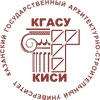About the authors
| First name, Middle name, Last name, Scientific degree, Scientific rank, Current position. Full and brief name of the organization, The organization address. | Nadyrova Kh.G. – candidate of architecture, associate professor E-mail: This e-mail address is being protected from spambots. You need JavaScript enabled to view it Kazan State University of Architecture and Engineering The organization address: 420043, Russia, Kazan, Zelenaya st., 1 |
| Title of the article | Urban-planning development of medieval Kazan in a context of the theory of cities complexity |
| Abstract. | In the research used a synergetic approach or the theory of cities complexity, according to which Kazan is investigated as a holistic and open system. It is organized hierarchically with interconnected mega-, media- and micro-levels and is capable of self-organization and development. Spatial organization of the Kazan Khanate was a mega-level. The value of this level in the system of the city was in the location of Kazan on the territory of the khanate, connections with cities in other states and with centers of uluses of the khanate. Media level was formed by spatial-planning structure with its elements: landscape, communication frame, large architectural complexes. Micro-level included separate religious, memorial, public, residential buildings and household constructions. Changes at each of these levels led to changes in the complicated system rectilinear and unpredictable. In accordance with the theory of the complexity of cities, the urban system is changed by applying the means of influence (development mechanisms) into hierarchical levels. At the media level, these funds were laws and decrees that regulate construction, traditional principles and methods of construction various ethno-social groups, medieval towns, etc. Mechanisms of development on the mega-level were: laws and decrees of the khans, military pressure neighboring states, recognition or denial of the rights of various ethnic groups khanate on the traditional ethnic areas, etc. Application in the research of the theory of the complexity of cities for the first time made it possible to trace the features of the urban planning development of the Kazan. In 1445-1552 Kazan as the system developed unevenly and spasmodically. At that the qualitative characteristics of the city either increased or decreased. After disaster of 1552, Kazan ceased to develop as a Muslim city. |
| Keywords. | urban-planning, architecture, history, synergetics, сomplexity theories of cities. |
| For citations: | Nadyrova Kh.G. Urban-planning development of medieval Kazan in a context of the theory of cities complexity // Izvestiya KGASU. 2014. №4(30) P.29-37. |















